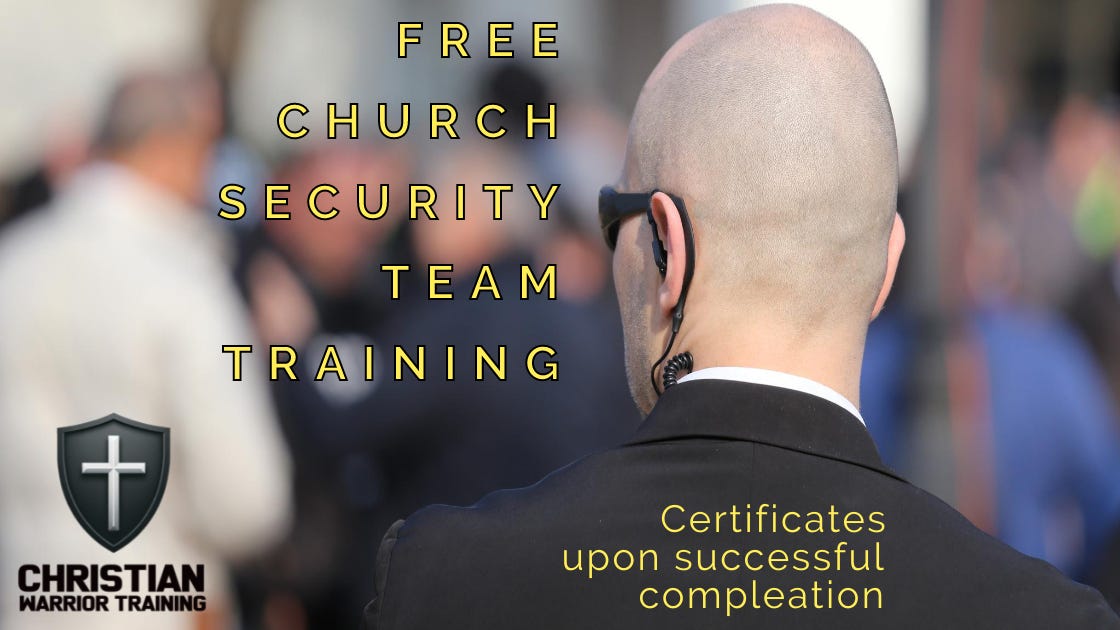"Be strong and courageous. Do not be afraid; do not be discouraged, for the Lord your God will be with you wherever you go." - Joshua 1:9
In today's rapidly changing geopolitical landscape, the threats facing our churches are evolving. One such threat that has been largely overlooked is that of Hezbollah, a terrorist organization with a global reach. In collaboration with Mexican drug cartels, Hezbollah poses a significant risk to American churches. This article aims to shed light on this issue and provide actionable steps for church security teams to enhance their preparedness.

The Hezbollah-Cartel Nexus: A Deep Dive
The Genesis of the Alliance
Hezbollah, a terrorist organization with its roots in the Middle East, has been gradually extending its tentacles beyond its traditional sphere of influence. One of the most alarming developments has been its foray into Mexico, where it has formed strategic alliances with local drug cartels. This alliance didn't happen overnight; it's the result of years of covert operations and shared interests.
Shared Objectives and Mutual Benefits
Both Hezbollah and Mexican drug cartels have much to gain from this unholy alliance. Hezbollah is primarily interested in expanding its operational capabilities and reach, especially within proximity to the United States. Mexican drug cartels, on the other hand, benefit from Hezbollah's military expertise, including tactics, training, and weapon systems. This symbiotic relationship allows both entities to enhance their capabilities significantly.
Intelligence Reports and Memos
Various intelligence reports and police memos have shed light on this dangerous nexus. For instance, a Tucson Police Department memo from 2010 indicated that Hezbollah had established a presence in Mexico. Another alarming revelation came with the arrest of Jamal Yusef in New York in 2009, which exposed a significant cache of assault rifles, hand grenades, and explosives that had been smuggled from Iraq by Hezbollah and stored in Mexico.
Weapon Smuggling and Training
One of the most concerning aspects of this alliance is the smuggling of weapons and the training of cartel members by Hezbollah operatives. Hezbollah has been involved in providing explosives training to members of Mexican drug cartels, marking a significant shift in the cartels' operational tactics. This training has led to an increase in car bombings in Mexico, a tactic commonly associated with Hezbollah.
The Operational Reach
The collaboration between Hezbollah and Mexican drug cartels has resulted in an extensive network that spans across the United States. This network could provide logistical support for Hezbollah sleeper cells on U.S. soil, including safe houses, smuggling routes, weapons procurement, and financial assistance. The operational reach of this alliance extends far beyond the Mexican border, posing a formidable threat to American security.
The Implications
The Hezbollah-Cartel alliance is not just a theoretical concern; it has real-world implications. The partnership has already resulted in mutual benefits, such as cartels adopting Hezbollah's tunneling experience for smuggling operations. These tunnels, initially used for drug smuggling, can now also serve as conduits for the illicit movement of weapons and operatives into the United States.
Why American Churches Are Vulnerable
The Symbolic Importance of Churches
American churches are not just places of worship; they are also significant symbols of American culture, values, and freedom. This symbolic importance makes them attractive targets for terrorist organizations like Hezbollah, who aim to strike at the heart of what America stands for. An attack on a church would not just be an act of violence but also a symbolic assault on American ideals.
The Open-Door Policy: A Double-Edged Sword
One of the most cherished aspects of American churches is their open-door policy, welcoming congregants from all walks of life. While this inclusivity is a testament to the values that churches uphold, it also presents a security challenge. The open nature of churches makes it easier for potential attackers to blend in with the congregation, making these institutions accessible and vulnerable targets.
The Security Gap
Many American churches, especially smaller ones, lack comprehensive security measures. The absence of trained security personnel, surveillance systems, and emergency response plans make these institutions soft targets. This lack of preparedness is not just a gap but a glaring vulnerability that can be exploited by organized terrorist groups who are well-versed in identifying and attacking weak points.
The Role of Location
The geographical location of some churches can also make them more susceptible to threats. Churches near the U.S.-Mexico border or those in areas with known drug cartel activity should be particularly vigilant. The proximity to these hotspots increases the risk of being targeted, as it provides attackers easier access and escape routes.
The Psychological Impact
An attack on a church would have a profound psychological impact on the American populace. Churches are places of sanctuary and peace, and an attack would shatter this sense of security, creating fear and panic not just within the immediate community but across the nation.
The Role of the FBI: A Shift in Focus and Its Implications
The FBI's Traditional Role in Counterterrorism
The Federal Bureau of Investigation (FBI) has long been at the forefront of counterterrorism efforts in the United States. With a mandate to protect and defend the U.S. against terrorist threats, both domestic and international, the agency has a critical role in ensuring national security.
The Shift Towards "Right-Wing Extremism"
In recent years, the FBI has shifted its focus towards monitoring and combating "right-wing extremism." While this is an important aspect of domestic security, the realignment has raised concerns about the agency's ability to monitor other potential threats adequately. This shift in focus has led to a resource allocation that may not be fully balanced, leaving gaps in the monitoring of threats from groups like Hezbollah. To be blunt, I have attended briefings with the FBI where they specifically said M.E. terrorism is not a concern anymore and the real threat, according to them, is “right wing extremism.” When they describe what that is, they pretty much describe you and I. This means they are missing the warning signs that I’m mentioning.
The Gap in Monitoring
The focus on "right-wing extremism" has led to a decrease in resources allocated to monitor other extremist groups and international threats. This reallocation has created a gap in the agency's ability to keep tabs on organizations like Hezbollah, especially when they are making alliances with entities like Mexican drug cartels. The lack of focus on such threats can lead to intelligence blind spots, making it easier for these groups to operate under the radar.
The Question of Preparedness
The shift in focus raises serious questions about the FBI's preparedness to handle a diverse range of threats. While "right-wing extremism" is undoubtedly a concern that needs to be addressed, the exclusion or minimization of other threats could put American security at risk. The agency must have a balanced approach to ensure that all potential threats are given the attention they deserve.
Actionable Steps for Church Security Teams: A Comprehensive Guide
Specialized Training Modules
The cornerstone of any effective security strategy is specialized training. Church security teams should undergo rigorous training modules that focus on threat identification and active shooter scenarios.
Threat Identification: Training on how to identify suspicious behavior, unattended packages, and other potential indicators of a threat.
Conflict Resolution: Techniques for de-escalating situations before they become critical.
Active Shooter Scenarios: Drills and simulations to prepare for the worst-case scenarios, including active shooter situations.
Intelligence Sharing with Local Law Enforcement
Collaboration with local law enforcement agencies is crucial for staying ahead of potential threats. Church security teams should:
Establish Communication Channels: Create a direct line of communication with local police departments and federal agencies.
Regular Briefings: Participate in regular intelligence briefings to stay updated on the latest threat assessments.
Incident Reporting: Develop a streamlined process for reporting suspicious activities to law enforcement agencies.
Enhancing Physical Security Measures
Physical security measures are the first line of defense against any threat. Churches should:
Surveillance Systems: Install state-of-the-art surveillance cameras that cover all entry and exit points, as well as key areas within the church.
Lock unused door: All perimeter doors that are not in use during service should be locked and monitored.
Perimeter Security: Strengthen the security of the church's perimeter with fencing, lighting, and additional surveillance.
A Call to Action for a Safer Tomorrow
The threat landscape facing American churches is not static; it is continuously evolving. The alliance between Hezbollah and Mexican drug cartels represents a real, tangible threat that cannot be ignored. This collaboration has far-reaching implications, not just for national security but specifically for the safety of our church congregations.
The Imperative of Staying Informed
Knowledge is power, and in the context of security, it is a lifesaver. Church security teams must make it a priority to stay informed about the latest intelligence and threat assessments. This information will serve as the foundation upon which effective security measures can be built.
The Necessity of Preparedness
Preparedness is not a one-time effort but an ongoing process. Security measures need to be continually assessed, updated, and tested to ensure their effectiveness. Drills, simulations, and regular training sessions are essential components of a robust security strategy.
The Power of Collaboration
No man is an island, and this holds true for security as well. Collaboration with local law enforcement agencies and even other churches can provide additional layers of protection. Intelligence sharing, joint training exercises, and community engagement are all avenues through which security can be enhanced.
The Responsibility of the Community
Finally, it's not just the security teams but the entire church community that plays a role in ensuring safety. From being vigilant to participating in community watch programs, every member has a part to play in creating a secure environment.
A Safer Tomorrow
By taking proactive steps, staying informed, and fostering a culture of security and awareness, we can mitigate the risks posed by threats like Hezbollah and drug cartels. It is our collective responsibility to ensure that our places of worship remain sanctuaries of peace and spirituality. Let us rise to the occasion and create a safer environment for our congregations, today and for the generations to come.






Thank you! God bless you!